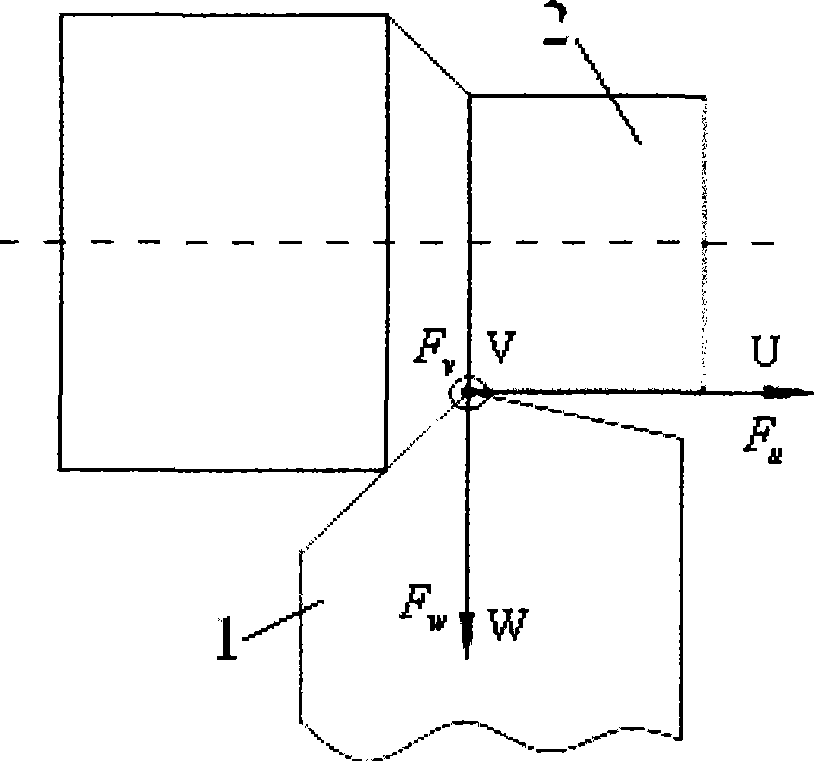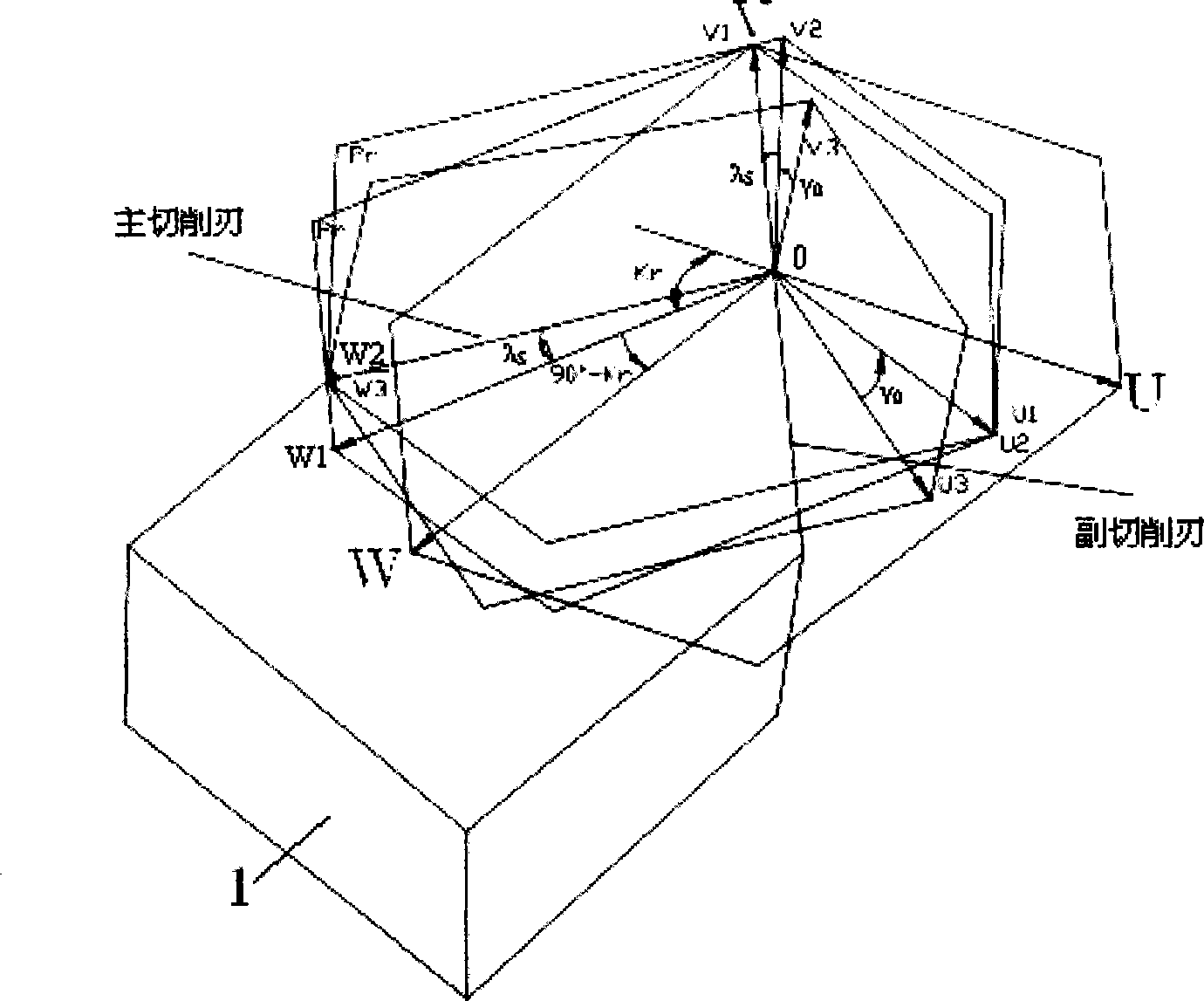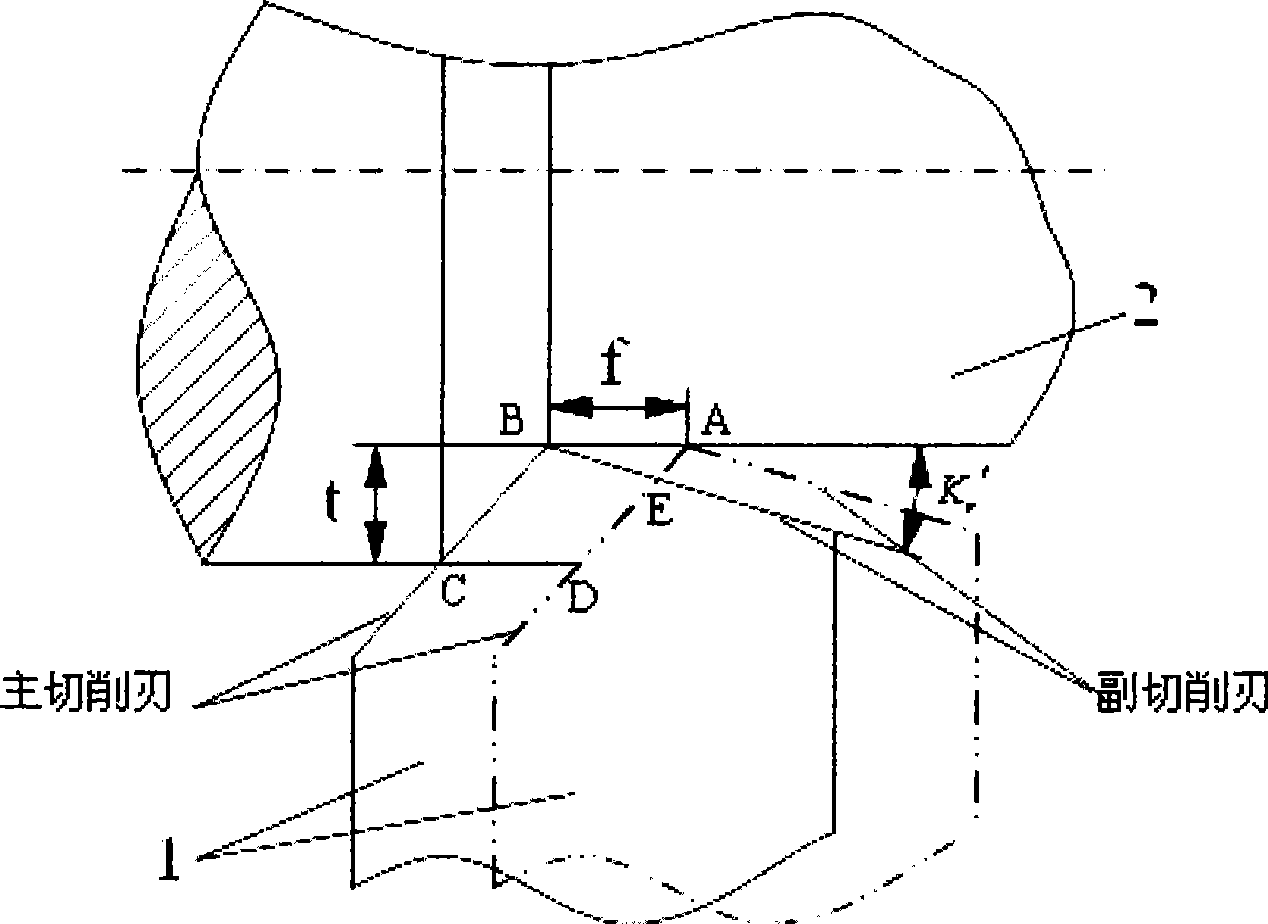Turning force prediction method based on cutting-tool angle and cutting amount parametric variation
A tool angle and prediction method technology, which is applied in the field of turning force prediction based on the change of tool angle and cutting parameters, can solve the problems of difficult prediction model, cutting experiment is not allowed, and large training time is spent
- Summary
- Abstract
- Description
- Claims
- Application Information
AI Technical Summary
Problems solved by technology
Method used
Image
Examples
Embodiment
[0058] Using Kistler9257B dynamometer made in Switzerland, Kistler5070A charge amplifier and Kistler9403 tool post, the three-way turning force is recorded in real time through the computer turning force data acquisition system. Two freshly sharpened turning tools were used and dry cutting. Table 1 shows the tool geometry parameters of the two turning tools.
[0059] Table 1 Tool geometry parameters of two turning tools
[0060] Material front angle Leading angle Secondary declination Blade inclination Rear angle Knife No. 1 YT15 12° 45° 60° 6° 8° Knife No. 2 YT15 3° 83° 20° 0° 13°
[0061] (1) Take the No. 1 knife and install it on the tool holder. The selected cutting parameters are: spindle speed n=475r / min, feed f=0.16mm / r, cutting depth t=1.0mm; for the workpiece Carry out cutting, and get the three-way cutting force F through the dynamometer u , F v , F w The value of the three-way cutting force K is calculated accor...
PUM
 Login to View More
Login to View More Abstract
Description
Claims
Application Information
 Login to View More
Login to View More - R&D
- Intellectual Property
- Life Sciences
- Materials
- Tech Scout
- Unparalleled Data Quality
- Higher Quality Content
- 60% Fewer Hallucinations
Browse by: Latest US Patents, China's latest patents, Technical Efficacy Thesaurus, Application Domain, Technology Topic, Popular Technical Reports.
© 2025 PatSnap. All rights reserved.Legal|Privacy policy|Modern Slavery Act Transparency Statement|Sitemap|About US| Contact US: help@patsnap.com



